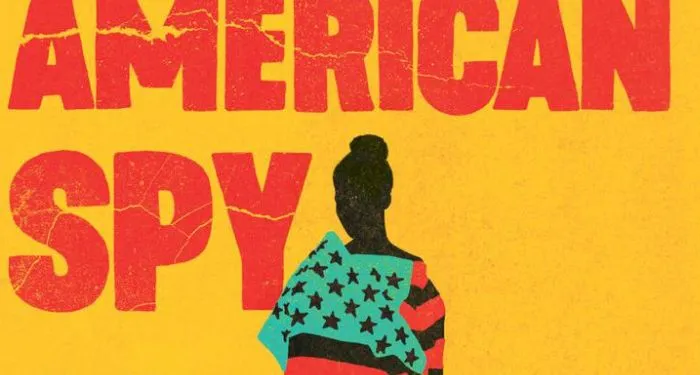“One doesn’t marry in order to write about women nor have children to write about children nor teach in a prison to write about prisoners,” John Cheever told The New York Times in 1977, discussing his newly published prison novel, Falconer. His interviewer, John Hersey, had commented that he had heard Cheever had taught at Sing Sing. Cheever was quick to dispel any overt connection between his novel and a real prison. His answer has a certain flourish. It provides cover that I myself have enjoyed while citing it, even if it’s a tad defensive, as I probably am as well.
Of course there would be some relationship between Falconer—the fictional state prison where Cheever’s protagonist, Ezekiel Farragut, a professor and heroin addict, is doing time for killing his brother—and the real Sing Sing, but in their exchange Cheever is forced to run interference. He understands that while critics and readers for the most part regard middle-class domestic content in fiction as “fictional,” the more foreign milieu of prison calls into question the intent and the ethics of any writer who chooses it as a subject. They assume that the writer, by virtue of their station, their very capacity to write, to publish a book, can’t know too much about the school of hard knocks, unless they trot out evidence of their unusual and unlucky experience.
Less than a year after Cheever told The New York Times that he didn’t teach in a prison to write about prison, Jack Henry Abbott contacted Norman Mailer from a federal correctional facility near Butner, North Carolina after having read that Mailer was writing a novel about the murderer Gary Gilmore. Abbott’s letter was an appeal: Gilmore had exaggerated in the claims he’d made to journalists, Abbott said, while he himself could give Mailer a far more accurate sense of “the atmospheric pressure…of what it’s like to be seriously a long-term prisoner in an American prison.” Mailer wrote back, and thus commenced a series of letters eventually collected into Abbott’s book In the Belly of the Beast, which was published in July 1981.
Just six weeks before the book appeared, Abbott was paroled thanks to the support of Mailer and others in the literary community, including Robert Silvers, then the coeditor of this magazine. Abbott, having spent most of his life incarcerated, was apparently ill-equipped for freedom, and brought the old jailhouse methods of resolving disputes to the free world. After a minor disagreement outside a restaurant near his halfway house on the Bowery, he killed a man working there as a waiter, an actor and playwright named Richard Adan. Abbott spent two months on the run before he was caught and given fifteen years to life, as if the slim interim of champagne dinners had been but a dream with a terrible ending. The literary community stopped taking calls, with the exception of Mailer, who had testified in Abbott’s defense.
A few weeks after the murder, Michiko Kakutani, then a quite powerful literary critic for The New York Times, wrote an article titled “The Strange Case of the Writer and the Criminal,” in which she summarized Abbott’s grim and long incarceration and his short and brutal freedom. She all but blamed Mailer for Adan’s murder, writing about his long obsession with violence and his support for Abbott’s release. Abbott’s “credo of macho self-reliance fit Mr. Mailer’s own model of heroics,” she declared, but writers, she suggested, could only ever play with such fancies. Mailer’s belief “that talent somehow redeems, that art confers respectability, that the act of writing can somehow transform a violent man into a philosopher of violence,” was, for Kakutani, “wishful impulse.”
Her argument is not unrelated to one made in 1972 by Fredric Jameson in his essay “Allegories of the Hunter,” in which he brilliantly analyzes what he calls Mailer’s “strategy of machismo”—an attempt to recapture a masculine purpose that is lost to the intellectual, to the man merely of books. As Kakutani sees it, Mailer is not a poseur in this regard. He stabbed his wife, she points out. But he is a romantic who projected redemption onto an unsavory character with a hair-trigger temper:
Given Mr. Mailer’s own blurring of fact and fiction—in his work and in his penchant for making public myth of his private life—it would be reasonable for him to assume that Jack Abbott could transform the past by turning it into art, trade physical assault for outraged polemic. But, then, Mr. Abbott, who had spent most of his life behind bars, was apparently not a reasonable man, at least by the standards of the outside world.
Kakutani’s arguments, searching as they are, are limited by her disdain. She declares it a “disingenuous leap” to compare actual political prisoners in repressive societies to the “jailed convict” in our ordinary prisons. She takes disapproving note of a general shift in attitude toward viewing prisoners “as the most oppressed members of an oppressed proletariat.” Abbott, to her, is not oppressed but a dangerous and unrepentant type whose pathologies are beyond the scope of the literary world’s misguided fantasies.
Kakutani seems to want to close a long chapter of literary history in which writers preserved a special mystique for violence and attributed a moral symbolism to the criminal and punished. She draws a clear boundary, between writers and dangerous people upon whom writers can only ever project. But then, in an ironic about-face, she quotes Joyce Carol Oates, who says Abbott’s book is “more a literary book than an authentic book—it showed he’d read a lot of Genet.”
*
What’s uncanny about these arguments—that literature is miles away from the world of the hard and the real, where bad people do bad things—is their timing. The death of Richard Adan was meant, from Kakutani’s purview, to put an end to the literary fascination with criminals. Instead, 1981 marked a new era of criminalization, and the beginning of a state-by-state and countrywide prison-building project of breathtaking scope.
This carceral expansion, as the scholar Ruth Wilson Gilmore has demonstrated, was not a response to a crime wave.1 Its underpinnings are more complex and various: a rise in “tough-on-crime” political campaigns, an increase in the power of prosecutors and the unions representing prison guards, a rural America caught in cycles of economic recession and a need for new construction and new jobs, and the discovery by state agencies that prison building gets funding while education and social services do not. What resulted was a massive prison-industrial complex with an unprecedented number of people under state control.
America was on the cusp of a new era, pushing questions about guilt and innocence to the side of questions about experience, and about the impact of prisons on individuals, families, towns and cities, on urban and rural geographies. Our freeways were newly haunted by sheriffs’ buses. Schools were denied money for textbooks but given grants for metal detectors. The state of California, where I’ve lived for more than two decades, built twenty-three prisons in twenty years, mostly sited in the agricultural Central Valley, where the Department of Corrections became the highest-paying employer of high school graduates.
As guards were hired and prisons expanded, they had to be filled. The people sent to them came mostly from one layer of society, the poorest—suggesting that it is fate of origin, even more than character, that informs destiny. It simply can’t be a coincidence that very few middle-class people end up in prison. Calls like Kakutani’s to leave the prisoner in the prison were effectively calls to ignore the logic of a society where some people are valued and flourish, and others are not, and don’t.
Under these conditions, any serious writer could hardly share Kakutani’s disdain for the “jailed convict.” We needed literature that included both the particulars and the broader view—literature that eschewed moral simplicity in asking who does bad and why, and that tarried with the component of luck, in life as in books, in shaping outcomes.
For one view of what such a novel might look like, we could look to early-nineteenth-century France. If Honoré de Balzac rendered a world that didn’t yet involve a vast jailed underclass, he showed us precisely how his society was managed and controlled. His novels stand as a kind of zenith of what the form can do: report on social reality both in its fine-grained detail and in its political and social structures—the organization of cities, the hierarchies of households, the role of money in informing even the most private thoughts and emotions.
Marx and Engels turned to Balzac for what his novels revealed about capital. Entire chapters of Thomas Piketty’s Capital in the Twenty-First Century mine Balzac’s fiction for its lessons about wealth distribution. As Peter Brooks writes in the introduction to Balzac’s Lives, his study of the characters in The Human Comedy, an “increase in social mobility, and the ambitions unleashed by capitalism and nascent democracy all called for a new semiotics of modern life.” Balzac declared that his ambition was to rival the civil registry in his invented world, without overlooking any social types, from bankers and peasants and poets to prostitutes and criminals.
The criminal, an antihero called Vautrin as he first appears in Père Goriot, is no ordinary outlaw but an underworld mastermind who has escaped from prison, where he was serving time on a forgery charge, and is currently in disguise, a character whose plot function is to reveal the hidden brutalities under the surface of the new social order following the revolution. He informs the naïve young Rastignac that all wealth is theft, and there are only two paths in life: “stupid obedience, or else revolt.” Vautrin’s lessons for Rastignac loom over the novel, even as Vautrin himself is found out, rearrested, and removed from the story.
He comes back, disguised as a priest, at the end of Lost Illusions, and is the main character of its sequel, A Harlot High and Low. Under his real name, Jacques Collin, he ultimately becomes a chief of police (which was the trajectory of the historical figure who inspired him, Eugène-François Vidocq). Whether he is maneuvering as underworld outlaw or as legal enforcer, it’s all the same to Vautrin/Collin. There is no good and evil in his corrupt milieu because there is no social order, only a struggle for wealth and dominance. Vautrin’s turn from criminal to cop is indicative of a broader phenomenon, but in Balzac’s catalog of social types he occupies an off-ledger position—an all-seeing Lucifer.
Michel Foucault described Eugène-Francois Vidocq as an “instrument for a police apparatus…both against it and with it.” And yet neither Vidocq nor Vautrin resembled the common arrestees that nonetheless long existed in France. For a record of such individuals, one might turn instead to the eighteenth-century internment registries that Foucault stumbled upon in the Bibliothèque Nationale, as he writes in his 1977 essay “The Lives of Infamous Men.”
What Foucault encountered were brief descriptions, “short stories,” as he puts it, “suddenly emerging from two and a half centuries of silence,” which “stirred more fibers within me than what is ordinarily called ‘literature.’” These infamous men who move and excite Foucault only do so, indeed only exist, “because of an encounter with power.” He describes them as cobblers, deserting soldiers, and scandalous monks. In other words, some poor bastard who might have stayed in the dark were it not for his moment in court, in prison, in the registry. Whether the charge is “peasant illegality” or “vagabondage” or crimes of a more daringly illicit nature, the glory of these individuals, prior to their arrest, is excluded. We only know of their defeat. Like “flash existences” from among “the anonymous mass of people,” the arrest records bring to life their subjects’ “appalling or pitiful grandeur.”
Foucault planned to write a book inspired by the brief descriptions of imprisoned people in this registry. His aim was to “restore [the] intensity” of unknown people, whose lives had been “reduced to ashes” in the public ledger book. In an echo of Balzac’s version of the civil registry, he planned to create a sort of “herbarium” containing existences both “obscure and ill-fated.” The men of this herbarium, he concedes, will be no match for the characters one encounters in Chekhov, Maupassant, or James—or, we might add, Balzac. Foucault’s goal was to salvage the criminal from the distortions of literature, to lift him from the realm of the celebrated antihero and instead illuminate essences conjured from facts alone, from names, crimes, dates in registries.
Foucault’s belief in the ghostly power of beings who “pass away without a trace” was perhaps meant as a corrective to the swashbuckling infamy of a character like Vautrin, whose shadow—the shadow of the bold and extraordinary criminal in literature—is so very long. It stretches from Balzac to books and movies of the mid-twentieth century, with figures like Andy Griffith’s character in A Face in the Crowd (1957), who is discovered in jail and rises to demonic heights as a Donald Trump–like peddler of serums and fantasies; Cool Hand Luke in the eponymous 1967 film, and his “failure to communicate” with a Florida prison warden; and Norman Mailer’s version of Gary Gilmore in The Executioner’s Song (1979), who demands his own death sentence.
Perhaps Jack Henry Abbott was a kind of hybrid—equal parts antihero (remember, he’d read his Genet) and poor bastard. After stabbing and killing an innocent man, his brief life of cocktail parties in New York City was done; he was reunited with the obscure and ill-fated just as their numbers were poised to multiply. Literature will always have its outlaws, but it is Foucault’s vision of the outlaw as an ordinary, unglamorous figure briefly illuminated by the glare of power that speaks most acutely and poetically to our country’s current systems of control.
*
Writing about a prison is not unlike writing about a school, a ship, a hospital, or any other self-enclosed world. But much of what sustains a prison happens on the outside. “They’d get released and go back to the street, which was another department of the penal system and vice versa,” Don DeLillo writes in Underworld, of the mindset of a young character tried as an adult for murder. Coming upon this description for the first time, I thought of the kids I knew as a teenager, kids whose fathers happened to be officers in the San Francisco Police Department, kids who themselves had a parole officer. It was a mark of cool to have a PO, if also an encumbrance. Their mothers worked at bail bonds companies or were superior court clerks down at 850 Bryant, another branch of the penal system.
California seemed by the mid-Aughts to be a state with a penal net thrown over it, and a place from which one could apprehend the curve of the future. It is both a shock and not at all a surprise that we now find ourselves in a situation where hardworking people with no criminal record are kidnapped from our streets by masked invaders who say they are ICE but show neither their faces, their warrants, nor their badges, and sometimes don’t even sport license plates on their vehicles. The brutalities one glimpses in California always seem to augur brutalities to come, in other forms and other places. Us first, and others next.
In 2013, having gotten involved with human rights work in California’s prisons, I asked a friend and mentor, a woman named Theresa Martinez who had spent twenty-three years in the prison on which I eventually modeled my fictional one, if women on death row there worked jobs. They work, she said. They have six sewing machines. What do they sew? I asked. Sandbags, she said, for the California Department of Transportation. An image flashed into my thoughts of an industrial axle, turning and turning, as if I had suddenly been exposed to the boiler room of the world.
After that conversation, every time I saw a sandbag on the side of the road I felt the turn of this axle. I pictured women running synthetic fabric along the presser foot of a state-supplied sewing machine. These sandbags, ubiquitous once you start to notice them, remain for me a potent symbol, an external hint of internal secrets. But they are more than symbols: until last year, when California finally phased out death row as a separate and isolated housing unit, any sandbag one passed on the side of a road might have been touched by the hands of our state’s condemned.
Los Angeles is this nation’s most populous county. My home there is within walking distance of an enormous criminal court complex. A mile to the east is our equally enormous county jail complex. This is the world in which Vautrin now finds himself—LA, the manufacturing capital of the US, and a place of extreme wealth inequality, a city that spends a significant portion of its operating budget on police. Vautrin’s job might be at a sorting warehouse in the Inland Empire, or something higher-paying and less legal. He might be the descendant of people who came west from Texas or Louisiana to work unskilled wartime jobs in aerospace, jobs that have long since vanished.
The question of who, in life as in literature, gets dragged into the penal net is never fixed. It includes writers who wind up incarcerated and people who become writers while incarcerated, and are no less authentic for having read some Genet, or some Angela Davis or bell hooks or Dostoevsky. More and more our literature has been enriched by writers who can report from deep inside, partly due to an increase in institutional grants and publishing opportunities that support their work, but perhaps more so from a sense that they are no longer objects of fetish, as Abbott perhaps was for Mailer, and instead simply writers among writers.
The new Vautrin, regardless of his creator’s firsthand experience, is possibly acquainted with foster care, Youth Authority, family court. He might try to find a shortcut to wealth, or more modest means of survival, but in a contemporary novel he is not counseling Rastignac on marrying wealthy women. He is boarding a sheriff’s department bus along with sixty other men and heading for Corcoran Prison, deep in the heart of California’s industrial farmland, where six thousand others stand around on housing yards. Today, this Vautrin might be a Salvadoran gardener risking his freedom to trim someone’s hedges, only to find himself handcuffed and headed to an ICE detention center in Texas.
*
The modern Vautrin has, in other words, come a long way from a Balzac novel, and he might even be a woman. Which is how I wrote her, in my attempt to depict in The Mars Room the life of someone put on a bus to prison in the Central Valley. But I realize now that the “penal net” had already cast itself over my previous novel, The Flamethrowers, probably because it had cast itself over life.
One of the characters in that novel tells a story about his brother, who is bad at robbing banks and gets caught. I had a friend in the Nineties named Tomas Potts who was bad at robbing banks and got caught. This character also describes the people in New York City who line up to get on the predawn bus for visiting hours at prisons upstate. He describes the men who are discharged from Rikers onto Queens Plaza, bewildered, at large, with gate money for a donut and coffee and little else. He wonders, as I had wondered when I lived in New York, at the bizarre symmetry of women and children boarding buses at 4 AM at Columbus Circle to visit imprisoned relatives upstate, while men were spit off Rikers buses at the same hour, 2.8 miles away.
Many contemporary novels avoid this reality, or counter-reality, by staying around the house and in the yard, or by sticking to autofiction, in which the protagonist is someone who writes novels (and, unlike Mailer, knows to keep the impenitent in the penitentiary, or, at the very least, to leave their letters unanswered). When The Mars Room came out, several journalists asked me why I hadn’t written a nonfiction book instead. They don’t normally ask this of fiction writers, and so the question was confusing. I responded that novels are a parallel universe where we can glimpse and understand aspects of this one. But the question wasn’t really meant to inspire a discourse about the function of art. It was instead a suggestion that one should be doing activism, or at the very least journalism, instead of writing fiction concerned with the portion of society that is normally invisible to the mean demographic of those who typically read fiction.
Foucault’s project to convert the internment registry into stories anticipated this very reaction, and wryly, in the “infamous” of his prospective title—an adjective adding a hint of the lurid and the sensational to seduce the reader. The real-life outlaw, even three hundred years ago, was already buried under the bureaucracies meant to limit and control him, and thus he must be prettied up with promises of infamy, genre, heroism, of reckless and inspired and despicable acts. Foucault writes that his dream would have been to restore the intensity of the people in the internment registry by analyzing their bureaucratic traces, but “lacking the necessary talent,” he ultimately left them in the very form that had first caught his notice, as a series of dossiers. And yet he never compiled the dossiers. He wrote only an introduction, marking out his project to conserve traces of these “poem-lives” in a book. We are left to write it ourselves.



















 English (US) ·
English (US) ·